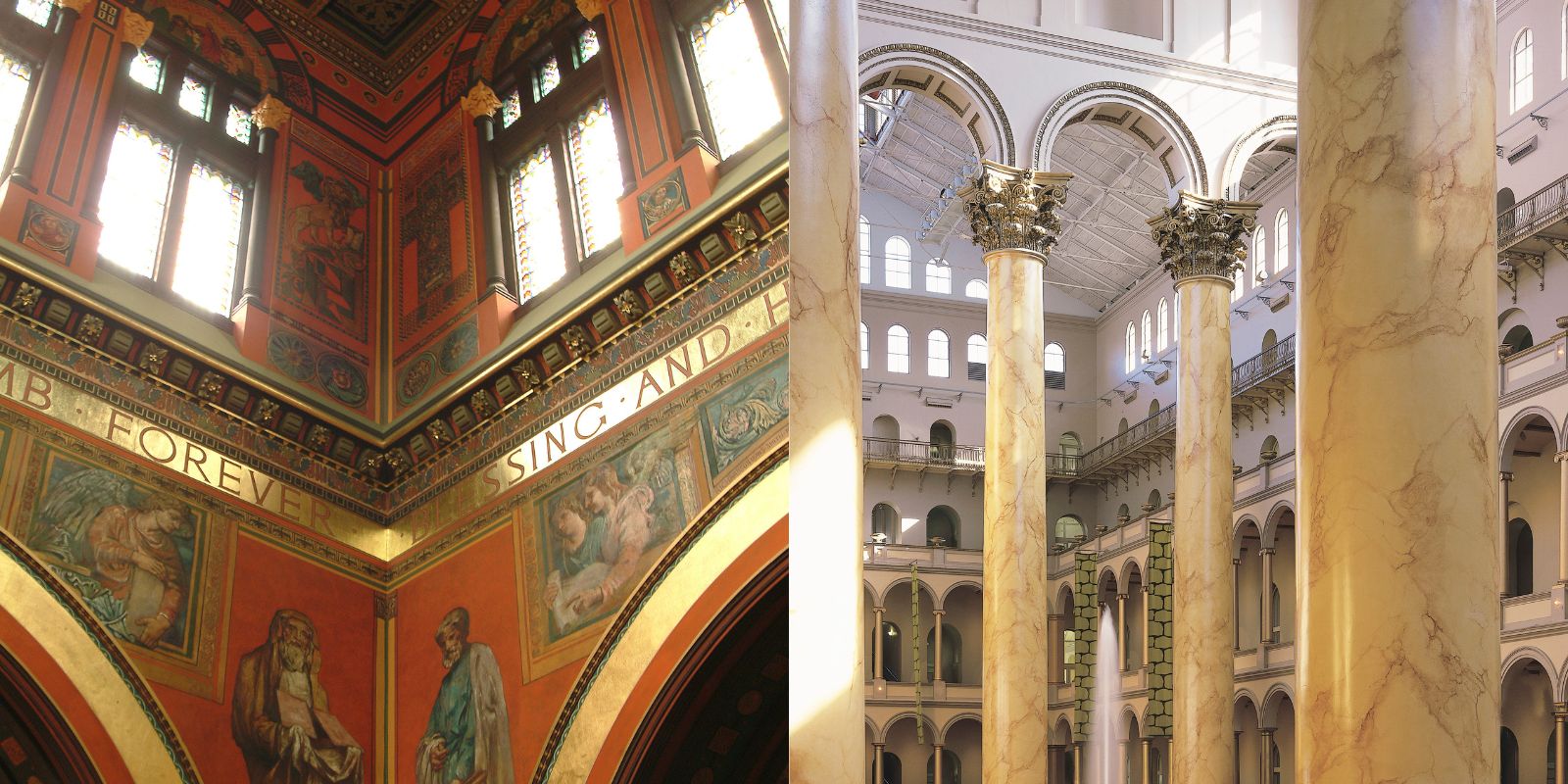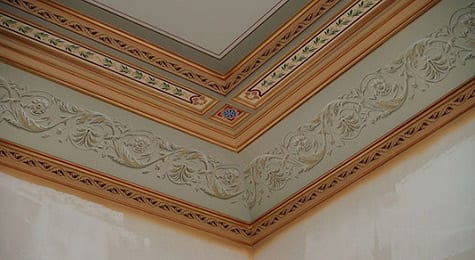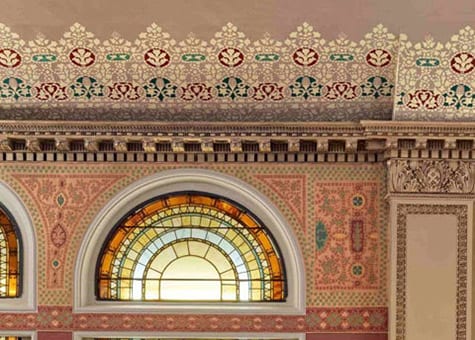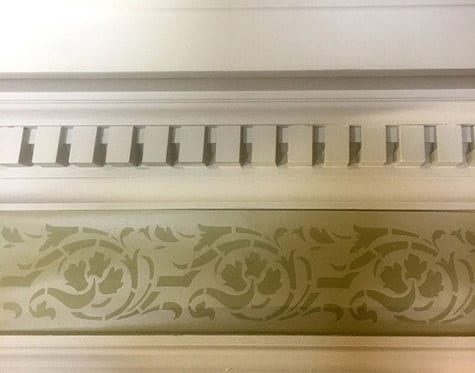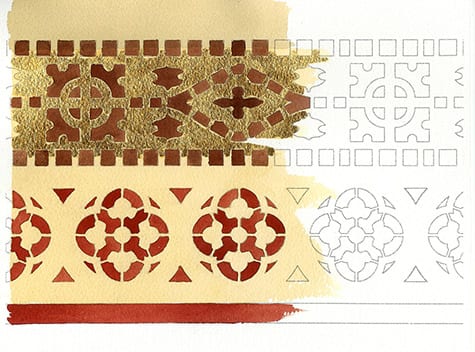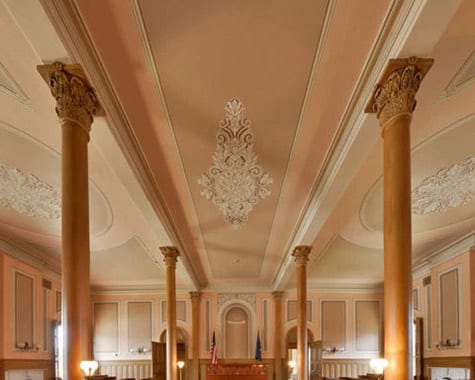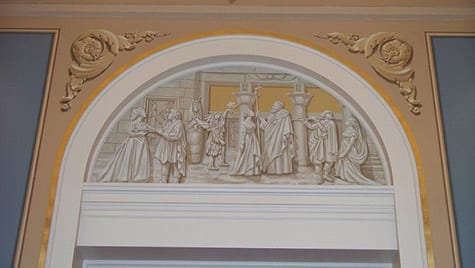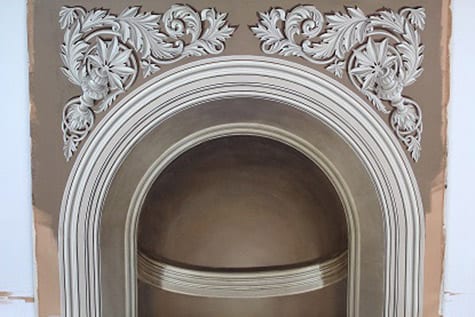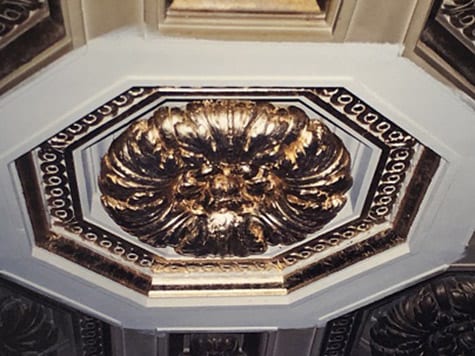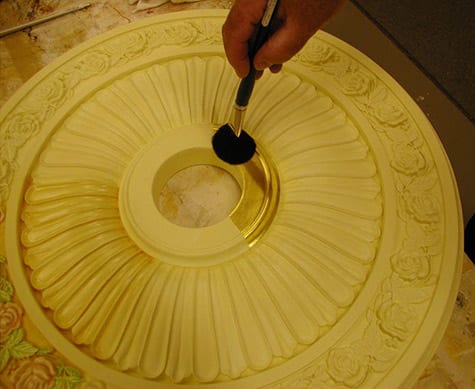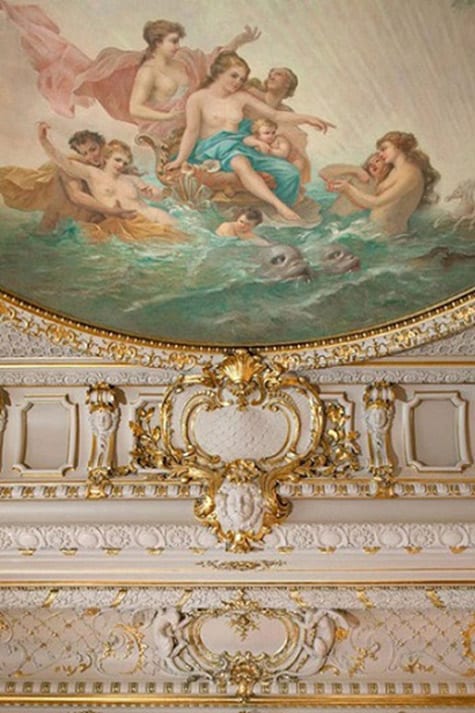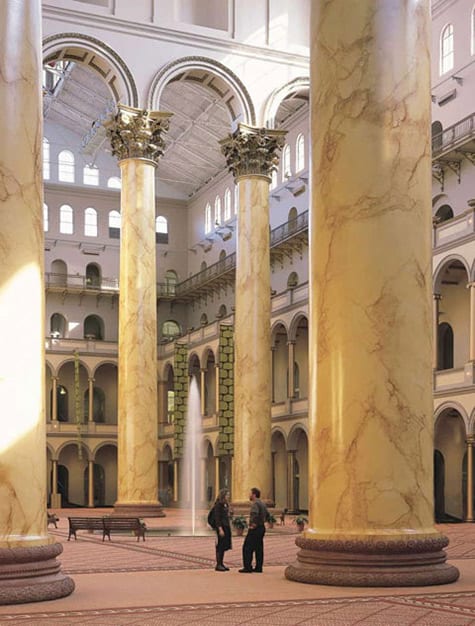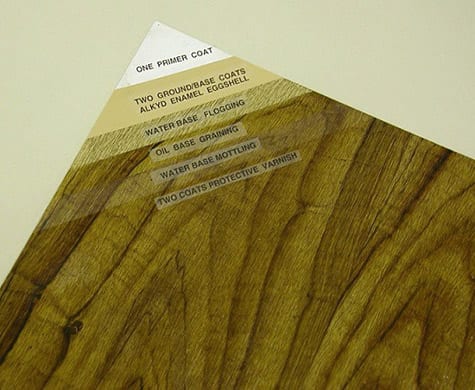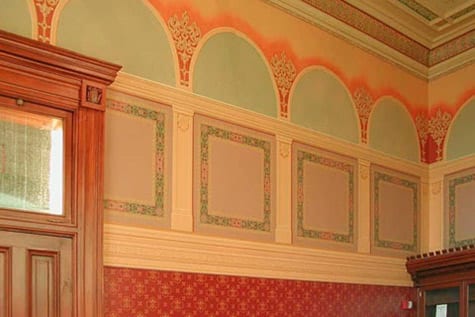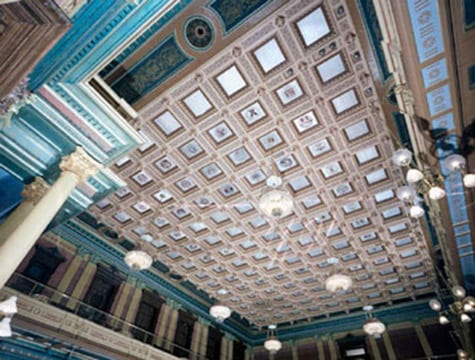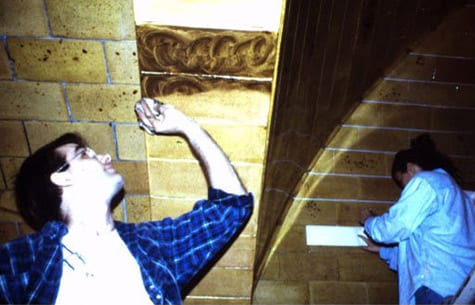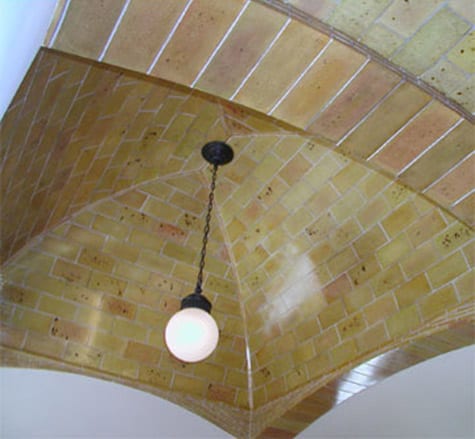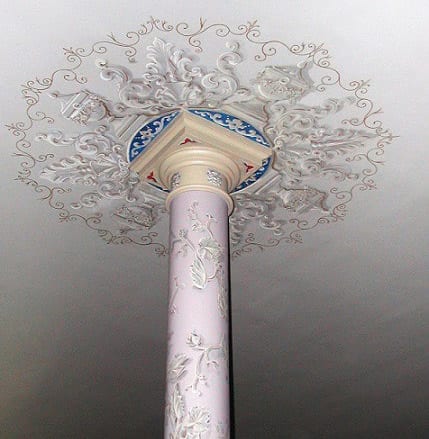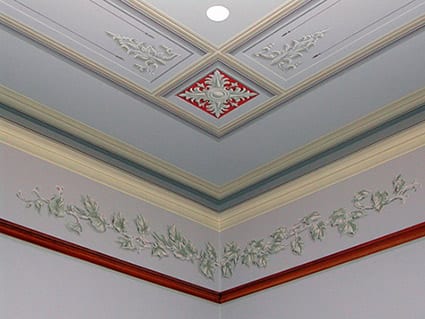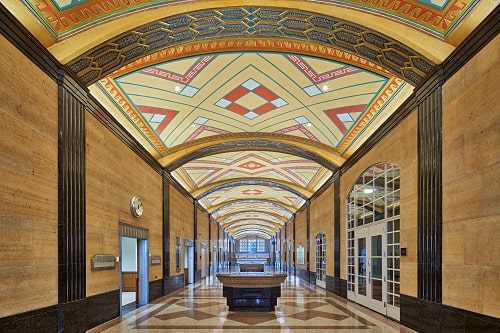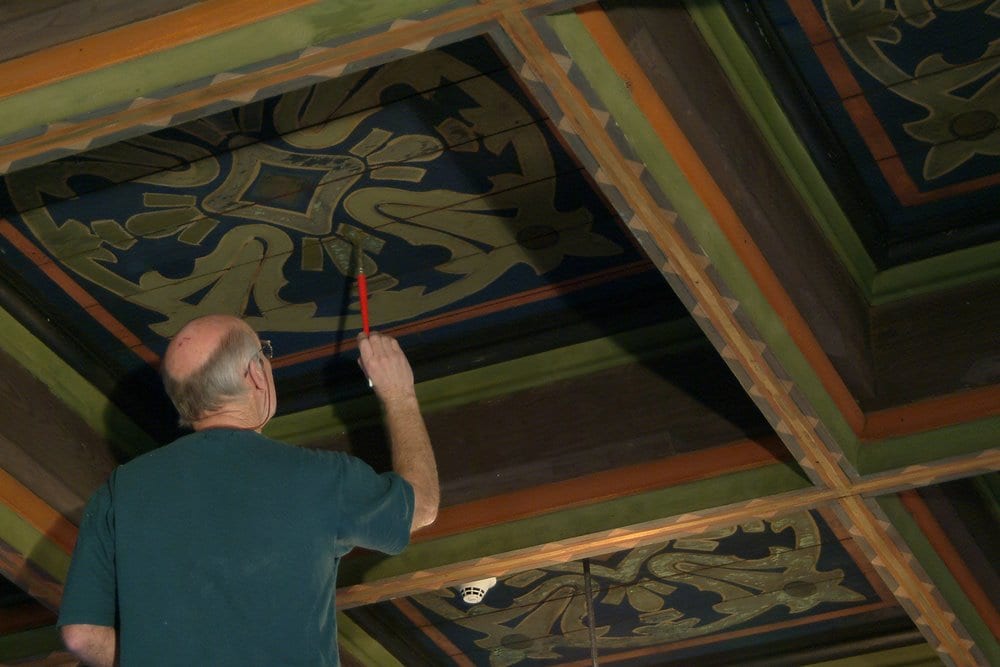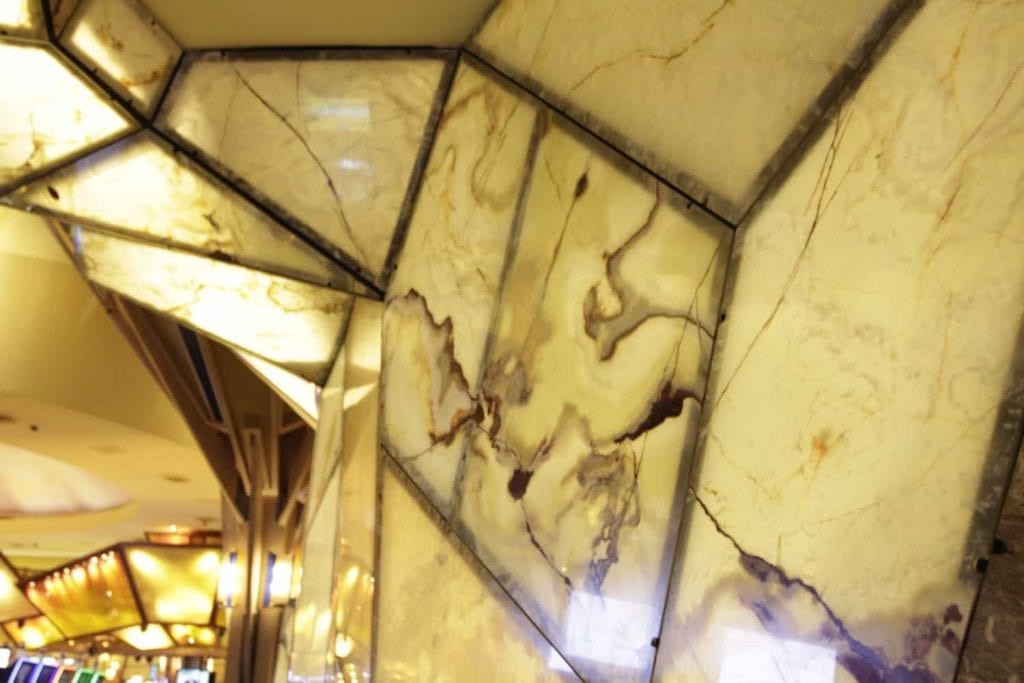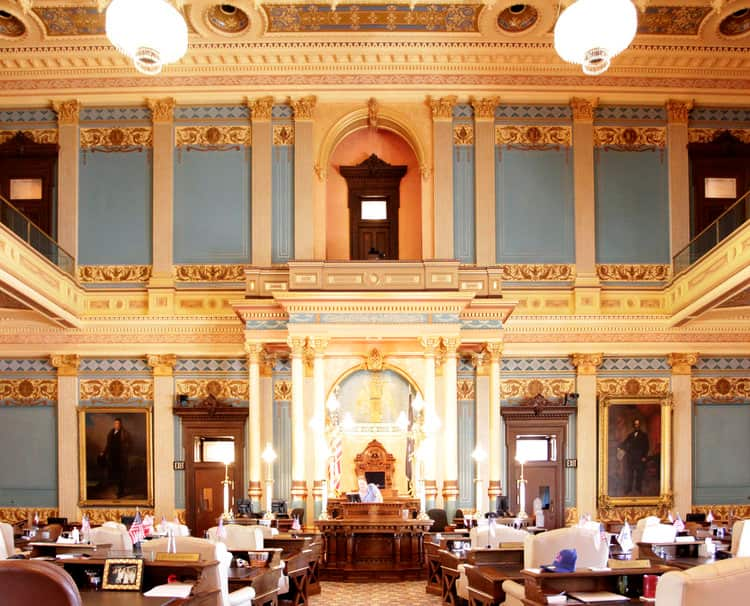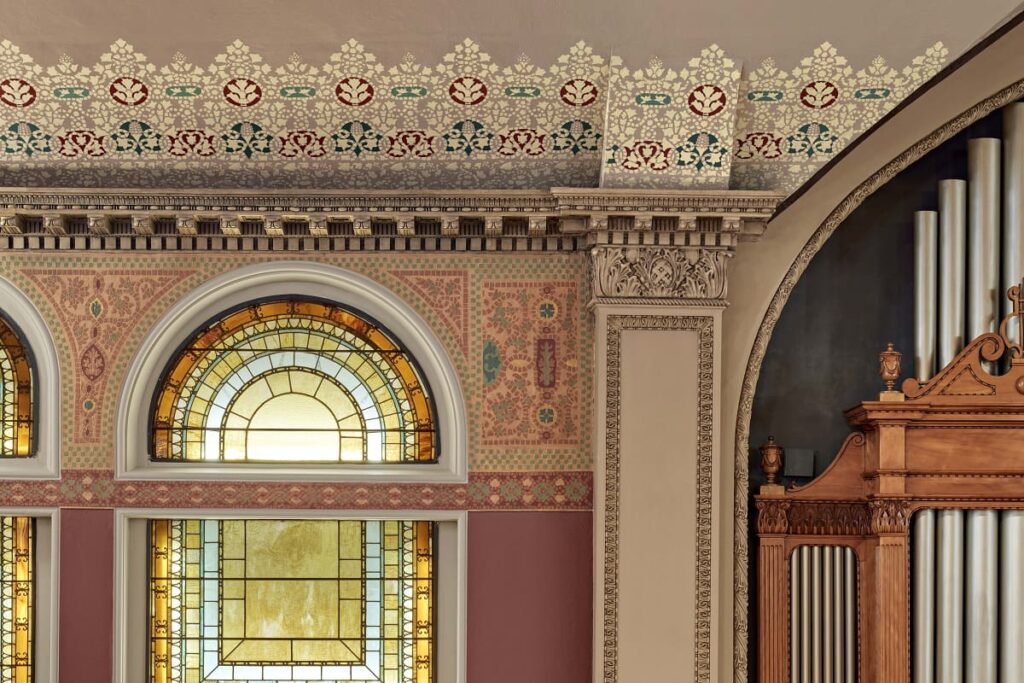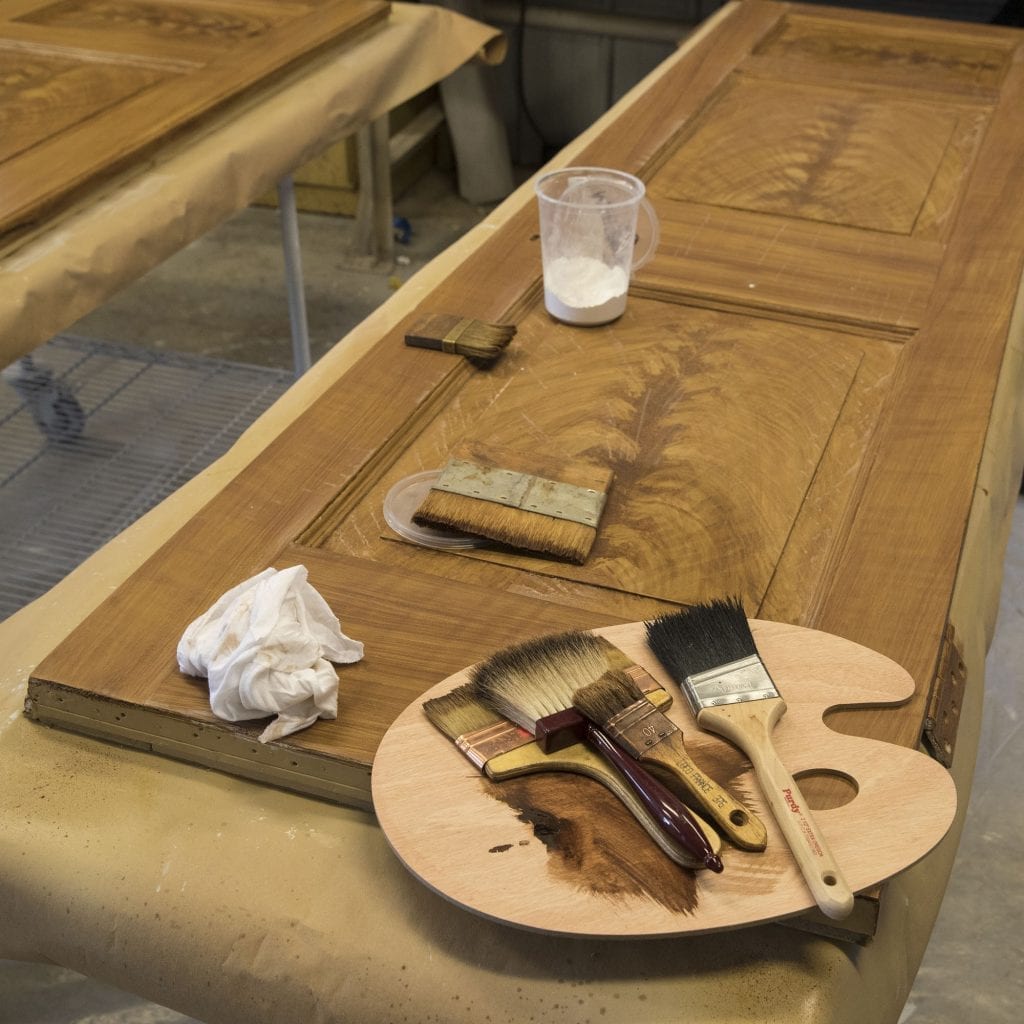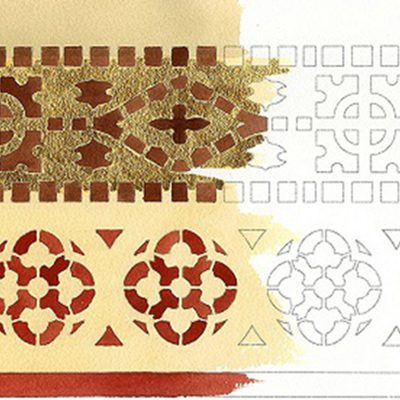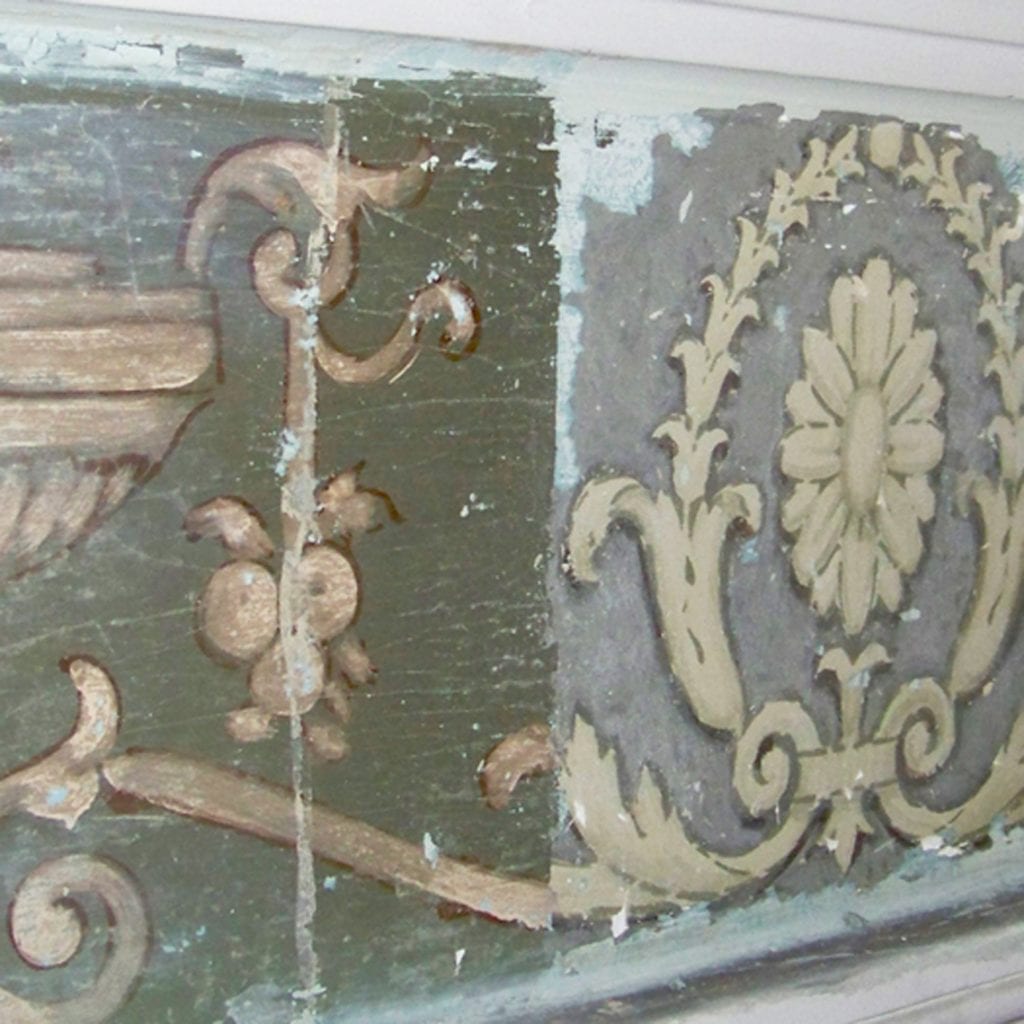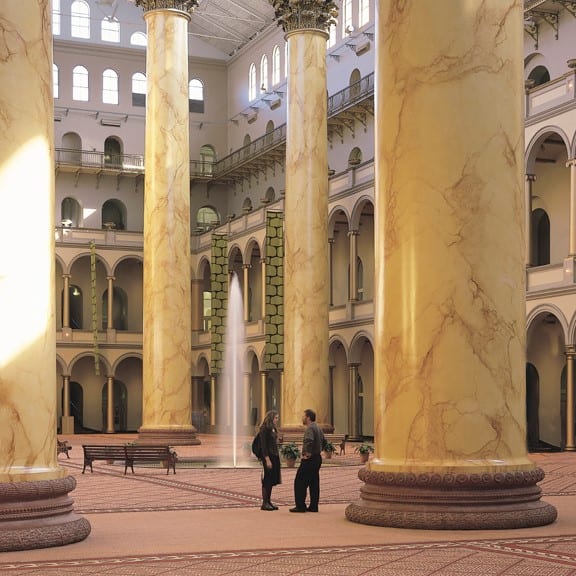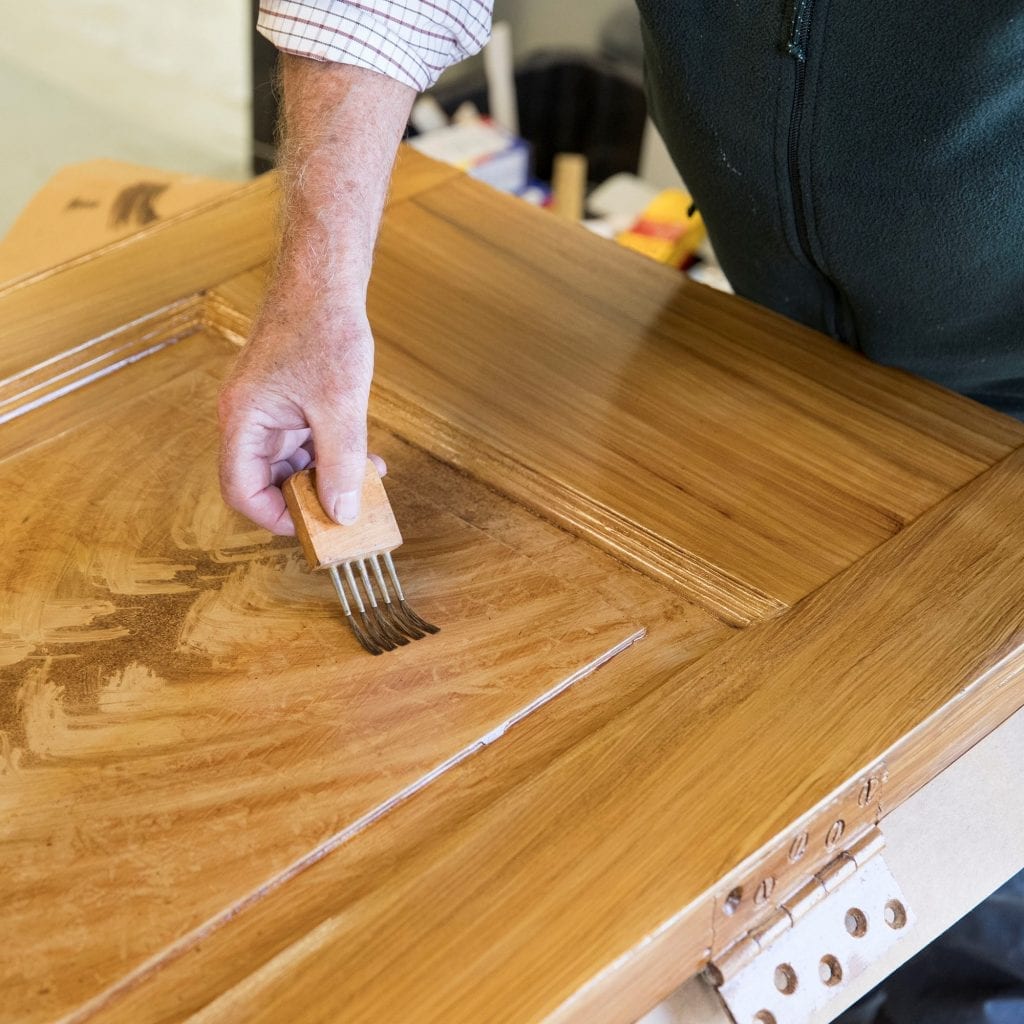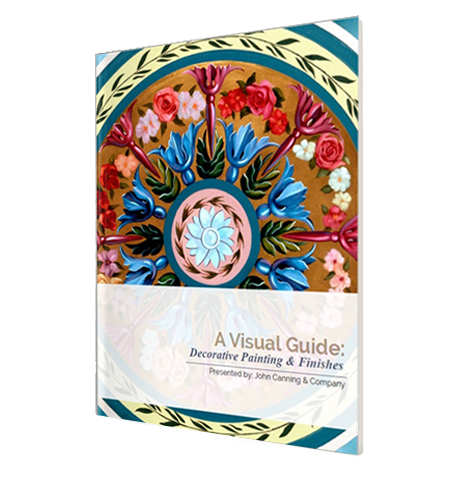The Use of Decorative Painting in Historic Interiors
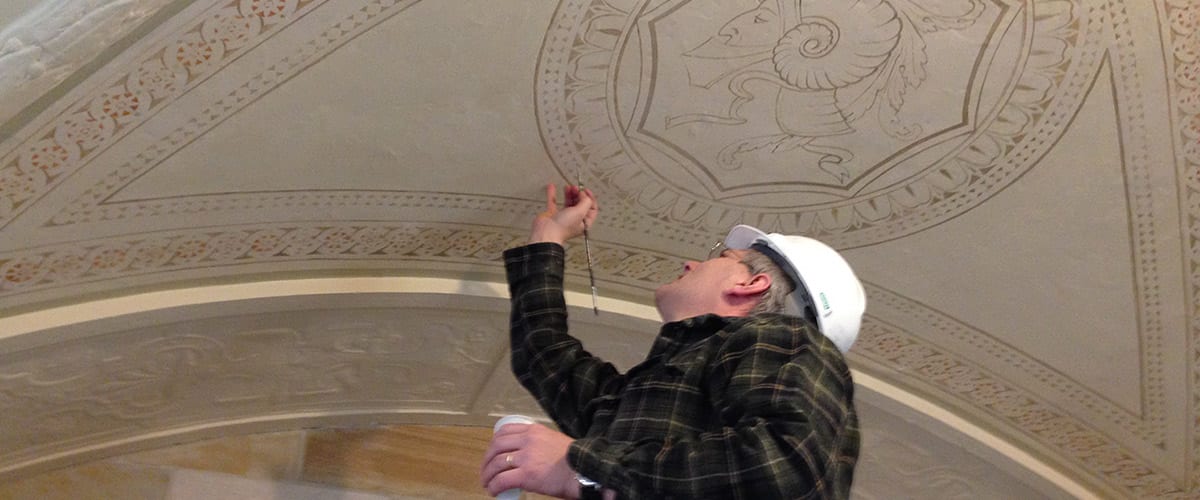
Humans have employed decorative painting since at least the Stone Age. Today there are several decorative painting techniques, many of which are used in the architectural restoration, preservation, and conservation industry. These techniques create visual excitement and cohesive design through embellished surfaces of unique textures and finishes.
John Canning & Co. regularly leverages these seven decorative painting techniques in American historic buildings:
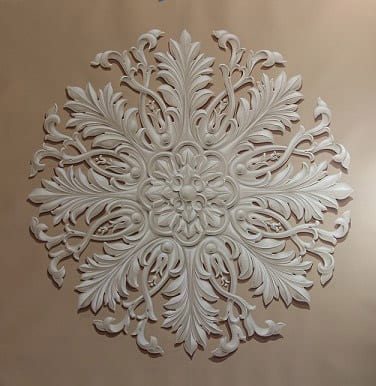
Some of the common decorative painting techniques that can be seen in historic interiors include:
Stenciling
Stenciling is a decorative design technique used to produce and exactly replicate a design or pattern. The image or pattern is created by applying paint to a surface by using the stencil to apply a design to a surface through superimposed openings/holes. The openings allowing the paint to reach the desired parts of the surface determined by the stencil design.
The art work in stencils can range from simple lettering and basic patterns to the very ornate and complex designs. Stenciling is use to help reinstate and create decoration for historic structures. Stenciling offers a practical method for producing elegant designs. Even though you can spend quality time developing and creating a stencil, the stencil can be used to quickly reproduce that design so you don’t have to sacrifice quality for quantity.
Stenciling is a common decorative finishes technique found extensively in historic interiors. A couple of examples include a residence in Newport New Hampshire and the First Church of Christ, Scientist in Boston.
Trompe L'oeil
Trompe L'oeil is a form of painting to give the illusion of depth and dimension. When done correctly it tricks the eye into perceiving a painted elements as a three-dimensional object. Sometimes called illusionism, a style of painting which gives the appearance of three-dimensional, In French literally meaning “trick the eye” and that is exactly what happens when the artisan uses this technique. To implement the Trompe L'oeil technique and artist must have a strong understanding of using colors and how lighting and shadows work together to create the layers needed to create the uses.
The use of trompe L'oeil on ceiling was common to give the appearance the building continue upwards to great heights, the term di sotto in sù (“from below” in Italian) is used to sum up this soaring effect. It is also used in portraits and murals to give the visual illusion the subject or elements are emerging from the painting.
Grisalle is a form of trompe L’oeil that uses monochrome painting to create decorative effects using elaborate shading technique.
Trompe L’oeil can be seem in many historic decorative interiors including in the Philadelphia Academy of Music and Independence Hall in West Virginia.
Gilding
Gilding also known as Metal leaf is an ancient art where tissue thin sheets of rare metals or imitation leaf are applied to either a flat or ornamental surface. This technique is often used to highlight certain features of architecture. The results can be opulent or richly understated. Gilding can actually use rare metals such as gold, silver, bronze and aluminum to put on surfaces including metal and wood. Methods of gilding include hand application and gluing, chemical gilding, and gold plating. Gilding can be used to give an object a gold appearance at a fraction of the cost a solid gold object, without the weight of sold gold. Radio City Music Hall in New York, The Cosmo Club in Washington DC, and the San Francisco War Memorial Opera House are great examples of interior gilding.
Marbleizing
Marbleizing, also known as marbling, faux marbling and simulated stone, is the preparation and finishing of a surface to imitate the appearance of polished marble. This technique has been used for many centuries were decorative painting is being implemented to help enrich the appearance of interiors. One technique is Scagliola which involves the use of specially pigmented plasters. Scagliola is a technique for producing stucco columns, sculptures, and other architectural elements that resemble inlays in marble and semi-precious stones.
Examples were marbleizing can be found include the Shrine of Our Lady of Guadalupe in La Crosse, WI, and the National Building Museum in Washington, DC.
Faux bois
This cost-effective decorative painting technique, which simulates the appearance of wood, is most often used when species of wood cannot be sourced due to rarity, availability, or cost. This imitation of wood or wood grains can be applied to non-wood surfaces such as inexpensive woods, bricks, and brass. The woodgraining process involves many layers and techniques dependent on the desired wood grain outcome. Learn more about faux bois and the projects John Canning & Co. has successfully crafted from our archives.
Examples of woodgraining include Michigan State Capitol, the Taft Museum of Art in Cincinnati, Ohio and Iowa State Capitol.
Glazing
A glaze is a thin transparent or translucent medium layer that modifies the appearance of the underlying paint layer. Glazes are used to change the surface through a carefully controlled application of the glaze over a painted surface. The multi-layering of several glaze colors develops a complex and beautiful surface. Glazing can be applied in three to thirty coats and has many different appearances.
Scumble is a technique similar to glazing, except that the coating is opaque, and is just painted on very thinly to allow bits of the paint below to shine through. While most painters glaze with dark colors, scumbling is more popularly used for lighter colors; especially atmospheric effects when rendering fog or clouds.
Strie is common technique that is used in glazing. The strie technique mimics the look of centuries-old paint altered by dust and sun. This technique creates a subtle dramatic stripe and plaid effect.
Glazing is extremely common in decorative painting is it is part of the process of so many techniques including Marbleizing and Faux bois. Some examples include the Eisenhower Executive Office Building in Washington, DC and the Hill Auditorium, at the University of Michigan.
Faux Gustavino Tile
Another technique utilizing scumbles and glazes is the creation of this faux Gustavino tile. Guastavino tile is a tile system technique that uses layers of terra cotta tiles set in a herringbone pattern for self-supporting architectural vaults using interlocking terracotta tiles and layers of mortar to form a thin skin. To achieve the faux Gustavino tile it requires rubbing in the scumbling and then applying multiple layers of glaze and a crazing varnish. A great example of faux Gustavino tile is the Boston Public Library where the faux Gustavino tiles were created to match the existing beehive Gustavino tile ceilings.
Conclusion
A high degree of decorative finishes knowledge as well as strong solid knowledge of architectural styles and materials is needed to match new decorative finishes to that of the original finish. This is what is needed to be a true artisan. Today’s artisans of decorative painting use this knowledge to implement historic decorative painting techniques to help keep the beauty of the past alive. As a architectural arts decorative painting contractor, John Canning & Co.'s artisans have decades of collective experience and the expertise to deliver the highest quality craftsmanship when it comes to decorative painting. If there are any projects that require decorative finishes in your future, we are always happy to assist.
FREE RESOURCE
Visual Guide:
Decorative Painting Finishes Resources
Looking to learn more about decorative painting techniques? Check out our Decorative Painting Visual Guide below or our decorative painting blog posts (for a full list of blogs on decorative painting, click here

